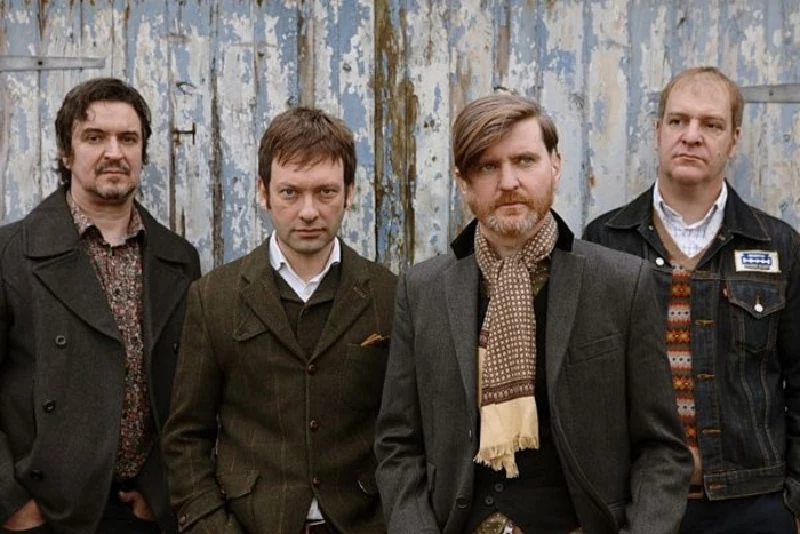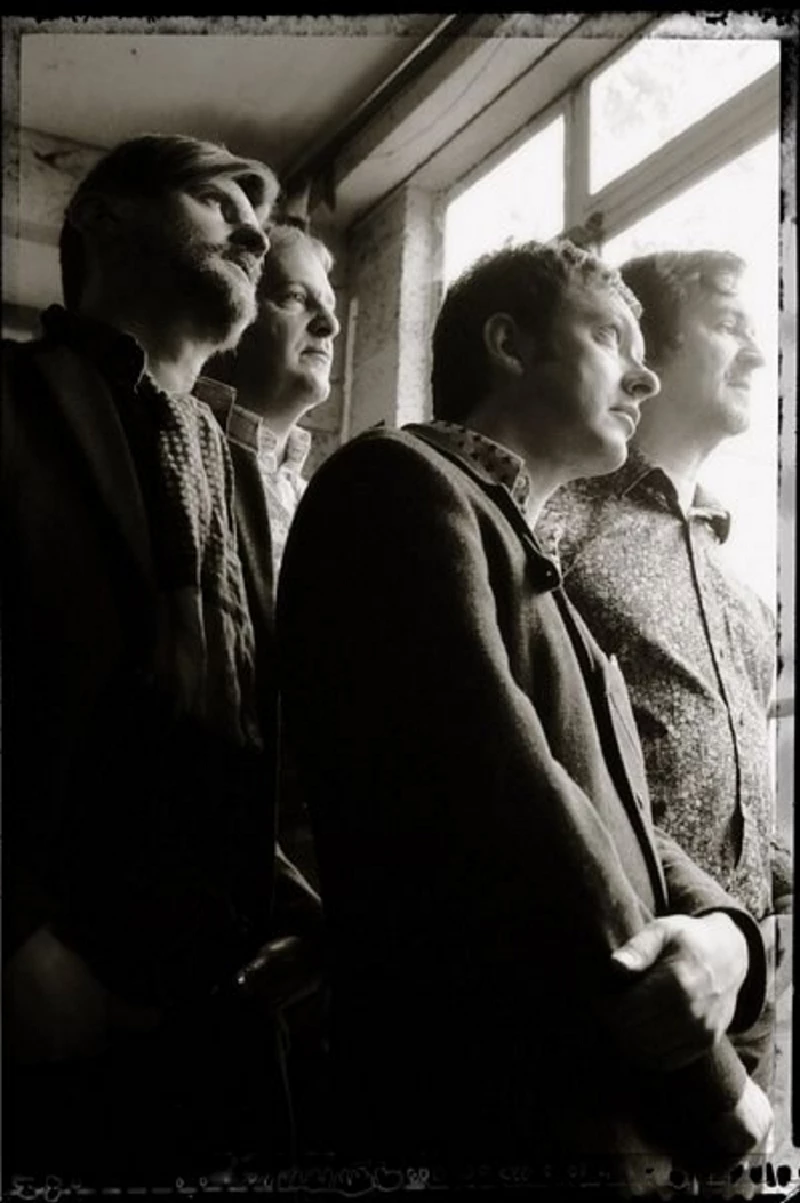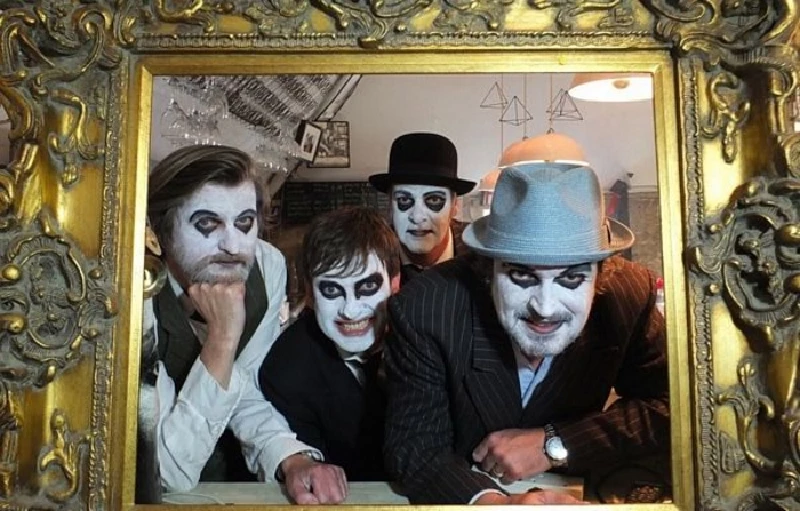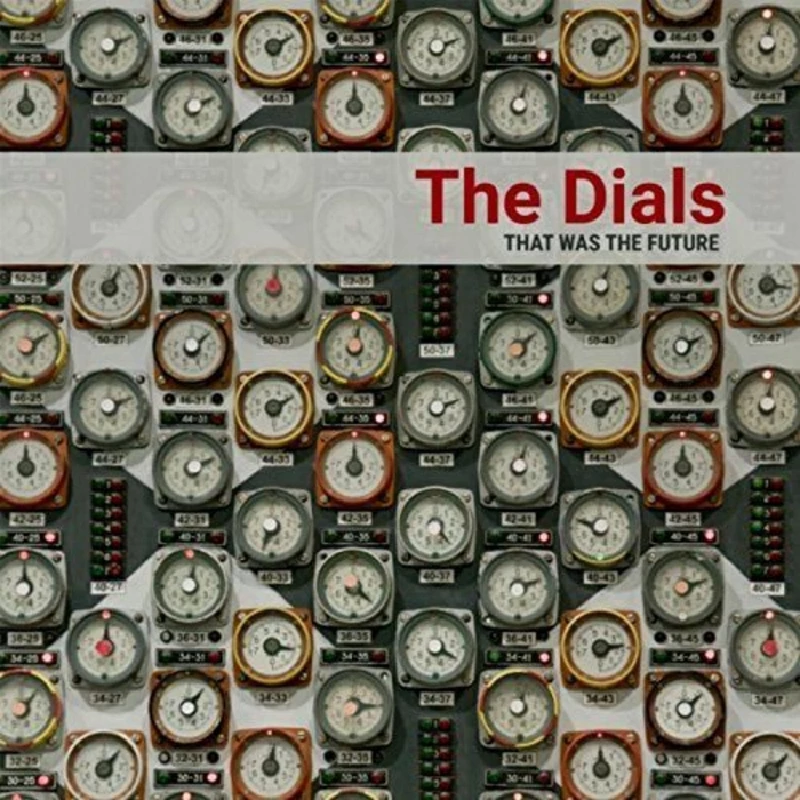Dials - Interview
by John Clarkson
published: 23 / 12 / 2017

intro
John Clarkson speaks to Dermot Watson and Andy Taylor from Brighton-based 60's-influenced band the Dials about their just released fourth album, ‘That Was the Future’.
The Brighton-based band the Dials have always been just under the musical radar since forming in 2002. The group’s organ-drenched music has embraced a wide range of 60’s influences across their three previous albums, ‘The Dials’ (2007), ‘Companions of the Rosy Hours’ (2009) and ‘The End of The Pier’ (2013). Their latest LP, ‘That Was the Future’, about which ‘Shindig!’ has said in a five star review that it is “one of this year’s best albums” and Bob Harris at BBC Radio has described as being “weird and wonderful, looks set to bring The Dials to a wider audience. ‘That Was the Future’ consists of several instant classic moments such as the cascading slow burner of an opener ‘Once’, about a claustrophobic romance in its last stages in which its co-inhabitants desperately try to stick together (“Listen to you think of the new ways to go on”), and the sprightly, upbeat ‘Cuckoo Clock’ which takes its inspiration from a Bronze Age standing stone. Other highlights include rambling Booker T and the MG’s-style jazz-influenced instrumental ‘The Nark’, chiming psychedelic pop number ‘The Race’ and the wistfully melancholic title track, which is is about idealism. The Dials have had various line-ups, but currently consists of founder members Dermot Watson and Andy Taylor, and also Rich Parrish and Joe Allenby-Byrne. Pennyblackmusic spoke to Dermot Watson and Andy Taylor about the new album. PENNYBLACK: It seems that you have with The Dials taken as a blueprint 60’s psychedelic, garage and jazz rock and given it a 21st century makeover. Do you think that is an accurate assessment? DERMOT WATSON: I think you’ve (correctly) identified a lot of what makes us tick. I’m not sure that I would think about it as a blueprint, though. I think – earlier in our career – we may have consciously put musical references in. Now, it’s a less self-conscious process. We don’t deliberately musically quote but the influence makes it in anyway. I think this is a much better, more organic approach. PB: You, however, started out in 2002 as a traditional country act playing banjos on Brighton Pier. How did you move from that to The Dials of now? ANDY TAYLOR: Yeah, it's a strange progression, isn't it? The first album is a weird mish-mash of styles and I guess we made a conscious decision after that to narrow our sound down to something we felt was more honest. Dermot and I are still big Americana fans but we feel there are bands much better suited to playing in that style. Maybe one day we'll dust down the old pedal steel and B string benders... PB: While your music is very much your own, one can hear elements of 60’s/70’s Pink Floyd, the Zombies, the Byrds, Traffic, the Beatles, Booker T. and the MGs and slightly more recently The Stranglers and Squeeze. What else can be found in your record collections? AT: I'm a sucker for a good tune, whether it's Dave Brubeck, the Sex Pistols or Vaughan Williams. I was obsessed with the Stone Roses for a while, but was always more into the melodies and harmonies than their "dance element". Kevin Ayers is a big favourite of mine - I wish I had a big fruity voice like his, but mine always seems to come out more like Jilted John. Over on the LP shelf I can see Bert Jansch, Pavement, MGMT, Gram Parsons, Nick Lowe, Frank Zappa and Can. DW: In my collection you can find a lot of early country and folk (think Doc Boggs to Hank Williams) and - by way of more contemporary stuff, I've become slightly obsessed with Bill Callahan, Low and Thee Oh Sees recently. PB: The album was recorded in UNKLE’s Toy Room studio in your native Brighton. What kind of studio is it? Why did you decide to record it there? DW: Toy Room was perfect for us in that it’s not a ‘shiny’ studio with a polished sound. None of the gear is obvious ‘off the shelf’ stuff…it’s crammed full of old Soviet era valves, obscure effects and lots of weird and wonderful instruments. That environment suits us perfectly. Things don’t plug in and play in a reliable, obvious and consistent digital way but that means you can find – by luck as much as design – all sorts of weird acoustic possibilities. PB: You began work on ‘That Was the Future’ soon after you released ‘The End of the Pier’ in 2013. Why has it taken you so long to finish it? DW: If it was left to Dermot, we'd have finished it in 2 weeks...so I can only apologise, it was all my fault. It won't happen again, honest. The dog chewed it. PB: You worked with producer Ben Thackeray, who has worked with Patti Smith, Nick Cave and My Bloody Valentine in the past, on it. What do you think was the most important thing he brought to the record? DW: Ben has a fantastic ear, a vision and a great ‘bedside manner’. All of this mattered profoundly. On this record, we were comfortable – for the first time – to allow any kind of production input from outside the band. That’s reflective of how much we trusted and rated Ben. There are a whole series of seemingly small but profound ways in which he contributed. PB: The cover for ‘That Was the Future’ is spectacular. It is one of those sleeves – as you have done –that deserves a vinyl edition. Where did its idea of lots of stop watches running at different times come from and who designed it? DW: Thank you. We were originally going to call the album "The Moon and the Stars And the Tides of the Sea" but we soon realised that all our cover image options looked like Athena posters or Mindfulness memes. The image we used is actually a photograph of the control room from Smolensk nuclear power plant in Russia. I spotted it online and got in touch with the photographer who kindly let us use it. There's a similar image from the Chernobyl power plant after the explosion but the dials are all melted and twisted. It didn't, however, seem appropriate to use such an image to sell music. This is our first release on vinyl and I have to admit that it's very exciting. The rumbling sound between the tracks is a highlight for me. PB: How does the songwriting in the band work? You have three singers in the group. How do you decide who is going to take the main vocal on each song? DW: Raw ideas tend to arrive from me and Andy. From there, they enter the collective creative process where they’re shaped to become the finished items. The songs tend to find their own singers organically. There’s never any dispute it always seems obvious who should sing what. PB: The Cuckoo Stone is apparently a Bronze Age standing stone about a mile and half from Stonehenge. It is an unusual subject for a song. What was the appeal to you of writing a song about it? DW: I heard a news story on the radio a couple of years ago about the Cuckoo Stone and it just struck me as a great title for a song - it has a timeless, foggy quality to it like something from an MR James ghost story. I love the idea of using music to escape from this horrible digital-ness of modern life so writing a love song from the point of view of a standing stone seemed about as far removed from that as possible. I also like to think it's the second best song ever written about Stonehenge. PB: The title and closing track has a chorus line of “What was the future is now the past/The things that we believed in never did last.” Is that about the crash of the 60’s dream or about youthful idealism in general? DW: I am really not a fan of lifting the lid on the ‘meaning’ of songs. I think that takes away from the experience for the listener. I like to think that every listener brings their own experience to every track. I wouldn’t dream of ruining that. PB: There is a remarkable story about The Dials needing a fire crew of nine to rescue them from a bank vault in which they had become trapped whilst recording their ‘Companions of the Rosy Hours’. Is that true? How did that happen? DW: It's absolutely true! We were recording in Church Road studios in Hove, which used to be a bank. The live room was the old safe and there was a foot-thick steel door with a big 'do not shut' sign on it. Pidge, our drummer at the time, and I were jamming inside while the others were trying to do a mix next door when someone slammed the door shut to keep us quiet. When we asked them to let us out via the talkback system we heard a lot of struggling then some hushed whispering. It turned out that the room was airtight and they were trying to keep us calm so we didn't suffocate. Our alarm at being informed that a fire engine was on the way might have turned to blind panic when we spotted no less than nine firemen two hours later over the video link. We, however, had by now consumed a crate of ale which had been left in the room and were entertaining the fire crew with a selection of 80's Heavy Metal covers. We made it onto the front page of the 'Brighton Argus' for that...you can still find the article somewhere on Google. PB: ‘That Was the Future’ came out on October 13th and you have just played shows in Brighton and London to launch it. What are your plans now after that? DW: We’ve got a bunch of other shows lined up too [check out www.thedials.co.uk for details] and we’re already planning shows for next year. I also suspect [strongly] that ideas are going to start to emerge soon for new tunes. Personally, I can’t wait to see what direction we next take as I honestly have no idea. PB: Thank you.
Band Links:-
https://www.thedials.co.uk/https://www.facebook.com/TheDials/
Play in YouTube:-
Picture Gallery:-



most viewed articles
current edition
Tossing Seed - InterviewWaterboys - Roundhouse, London, 1/6/2025
Last of the Lovely Days - Interview
Brian Wilson - 1942-2025
Lemonheads - O2 Ritz, Manchester, 16/8/2025
Cary Baker - Down on the Corner: Adventures in Busking and Street Music
Morrissey - Photoscapes
Robert Forster - Interview
Belouis Some - Video Vault
Motorcycle Boy - Interview
previous editions
Flip Side - Raging PagesStereogram Revue - Voodoo Rooms, Edinburgh, 2/12.2015
Bob Mould - Brooklyn Bowl, O2 Academy, London, 11/2/2016
John Clarkson - A Life in Music
Bill Hicks - Profile
Ain't That Always The Way - Alan Horne After The Sound of Young Scotland 2
School - Interview
Miscellaneous - Minehead, Somerset, 8/5/2009...10/5/2009
That Petrol Emotion - That Petrol Emotion, Town and Country Club, London, 1988
Dave Greenfield - 1949-2020
most viewed reviews
current edition
Liarbilitys - VandalheartKirk Adams and Ed Woltil - Eat The Sunshine, Drink The Starshine
Big Flame - Peel Sessions 84-86
Wolf Alice - The Clearing
Good Charlotte - Motel du Cap
Silver Biplanes - Coming Up For Air
Bruce Dickinson - More Balls to Picasso
Suzie Ungerleider - Among The Evergreens
Phew, Erika Kobayashi,, Dieter Moebius - Radium Girls
Rupert Wates - Father to the Man
Pennyblackmusic Regular Contributors
Adrian Janes
Amanda J. Window
Andrew Twambley
Anthony Dhanendran
Benjamin Howarth
Cila Warncke
Daniel Cressey
Darren Aston
Dastardly
Dave Goodwin
Denzil Watson
Dominic B. Simpson
Eoghan Lyng
Fiona Hutchings
Harry Sherriff
Helen Tipping
Jamie Rowland
John Clarkson
Julie Cruickshank
Kimberly Bright
Lisa Torem
Maarten Schiethart